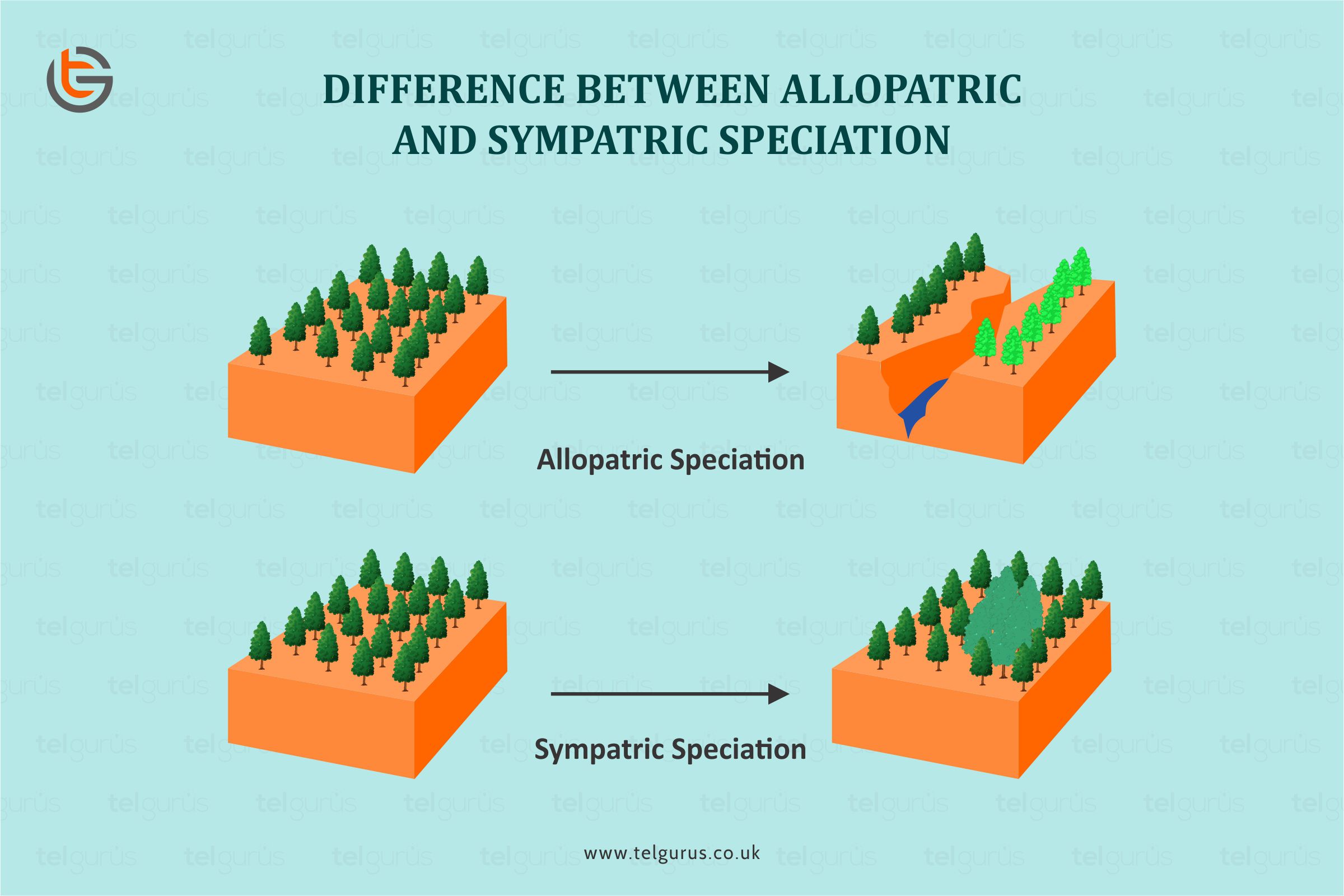Enrich your knowledge with our informative blogs
What is the difference between allopatric and sympatric speciation?

During the evolution process, the formation of distinct and new species is known as speciation.
New species generally form by two primary mechanisms, namely allopatric speciation and sympatric speciation.
Allopatric and sympatric speciation are two mechanisms involved in the new species formation from a pre-existing species. This process of forming a new species from the existing one is known as anagenesis.
What is allopatric speciation?
The allopatric speciation is also called geographical speciation. The difference in the environmental factors leads to the modification in allopatric speciation.
It occurs when two species live in separate environments, and therefore there is no gene flow between the populations.
This will then lead the populations to differentiate as they become adapted to various niches and the environment they are living in.
Understanding it in detail
A specific population can be geographically separated because of some extrinsic barriers like land topography that occurred due to earthquakes, swamps, ice fields, mountains, and deserts.
Once the population is geographically divided, the gene flow ceases between both.
And then, each population becomes genetically diverse due to the different selective pressures of the two different environments they are living in.
Post-separation, the small populations are composed of various allele frequencies as they undergo a founder effect. Therefore, genetic drift and natural selection act differently on the two populations.
Finally, the two diverse genetic backgrounds emerge, leading to new species incapable of interbreeding.
What is sympatric speciation?
In the process of sympatric speciation, the new species evolution occurs from the single ancestral species.
It occurs when two species are living in the same environment. Sympatric speciation is more complicated to understand as the species have occupied the same niche.
However, it may come down to the barriers like post-zygotic or pre-zygotic that prevent the gene flow—for instance, mating at different times of the day.
Understanding in detail
It mainly occurs through polyploidy. Whenever an offspring inherits more than the normal number of chromosomes in the population, this offspring is generally incapable of reproducing with the individuals who include the normal number of chromosomes of the population.
This leads to reproductive isolation within the same population. This process mostly occurs in plants and rarely in animals.
As the plants can self-reproduce, the polyploidy offspring can develop distinct and new generations by themselves.
Understanding the differences between allopatric and Sympatric Speciation
| Parameters | Allopatric Speciation | Sympatric Speciation |
| Definition | The population’s physical isolation due to the extrinsic barrier is known as allopatric speciation. | The new species’ evolution from one ancestral species living in a similar habitat is known as sympatric speciation. |
| Takes place through geographic isolation | Yes | No |
| Differentiation mechanism | It has natural selection | It changes in feeding pattern or its mechanism is polyploidy. |
| Emerging new species speed | It has a slowly emerging new species speed | It has a fast-emerging new species speed |
| Example | Darwin’s Finches, Squirrels in the Grand Canyon are a few examples | Due to the polyploidy in the plants like tobacco, wheat, maggot flies born on hawthorns and apples, etc. |
| Common | It is common in nature | It is common in plants. |
Bottom Line!
The major difference between allopatric and sympatric speciation is that the allopatric speciation takes place when the biological population is isolated by some extrinsic barrier leading to an individual’s genetic reproductive isolation.
On the contrary, sympatric speciation takes place when distinct and new species are evolved because of polyploidy.
Read More – Biology Questions
View More – Useful links for Your Child’s Development

Visualize the in-depth understanding of the natural world!
Biology would sound more interesting when your curiosity levels are satisfied with better visuals & logical explanations.
Categories
Recent Posts
- List of the qualities you should look for in your tutors?
- What is the most useful formulas in math?
- Describe the process of eating to defecation of food?
- Difference between the natural and artificial active response by the immunology system.
- Explain the different circle theorems
- How are nerve cells adapted to their function?










